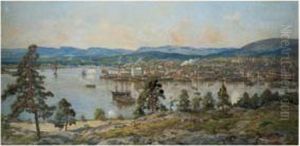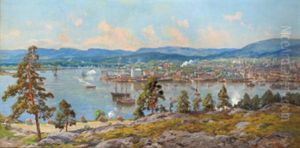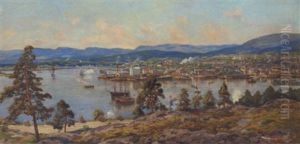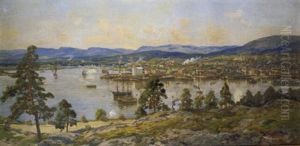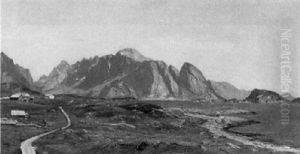Arne Hjersing Paintings
Arne Hjersing was a Danish painter and graphic artist, born in 1893 in Denmark. His work spans several decades of the 20th century, a period marked by significant changes in artistic styles and movements. Despite not being as widely recognized as some of his contemporaries, Hjersing made notable contributions to the Danish art scene, particularly in the realms of painting and printmaking. His artistic journey reflects a deep engagement with the landscapes and people of Denmark, imbuing his work with a distinct sense of place and emotional depth. Hjersing's style evolved over the years, navigating through influences of impressionism, realism, and elements of expressionism, yet always maintaining a personal and idiosyncratic approach to his subjects. He was particularly adept at capturing the subtle interplay of light and shadow, a skill that added a dynamic quality to his landscapes and urban scenes. Beyond his technical prowess, Hjersing's works often carried a quiet contemplation, reflecting a deep sensitivity to his environment and the changing times. His contributions to Danish art were not limited to his own creations; Hjersing was also involved in various artistic communities and movements, collaborating with other artists and contributing to the cultural discourse of his time. Despite his death in 1981, Arne Hjersing's legacy lives on through his artworks, which continue to be appreciated for their unique blend of technical skill and emotional depth. His paintings and prints offer a window into the Danish soul, capturing the beauty of its landscapes and the character of its people with authenticity and affection.
